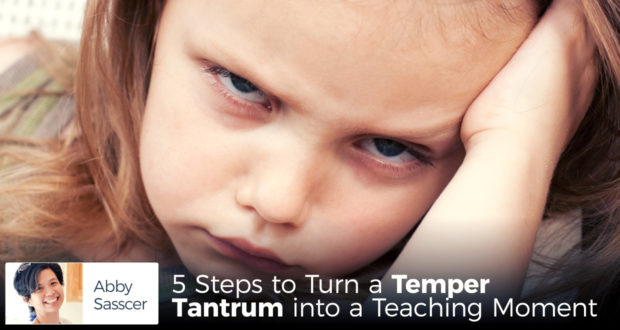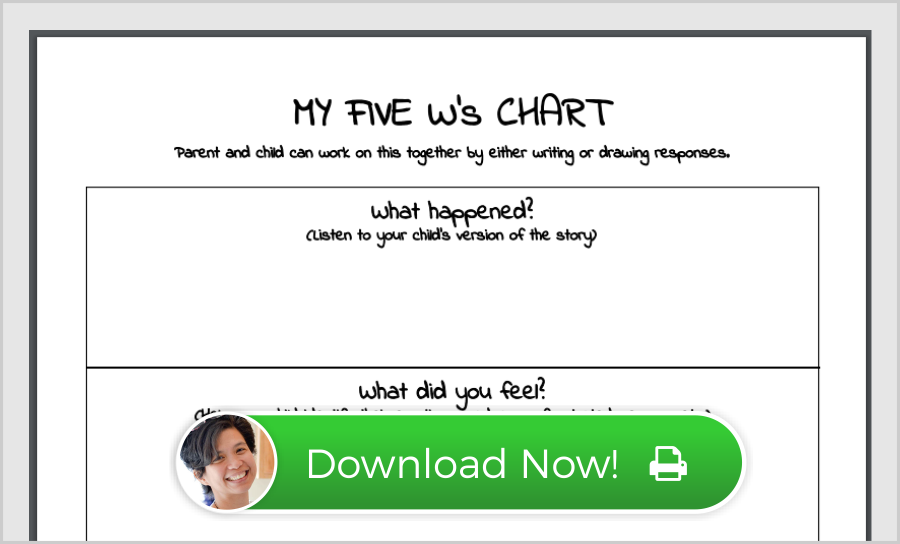It’s that time of the year again when we try to look within and make resolutions to become the wives and mothers our Lord has called us to be.
As of late, I have had the opportunity to review some of my training notes when I was working with children with special needs.
I find it extremely apropos to have revisited these notes again just after asking our Lord what areas I need to work on during this New Year. When I began working with children with special needs, I learned to be extremely calm during meltdowns and tantrums.
During these challenging moments, all trained attendants are required to remain emotionally neutral in order to ensure our own safety and the safety of the precious souls entrusted to us.
An All-Too Common Scenario
Despite my training, I must admit, I still have a difficult time dealing with my own children’s meltdowns and tantrums.
Here is a common scenario that happens all too often in every home, including my own:
A child misbehaves and the parent automatically reacts with impatience and anger.
The child is given a consequence right away and there may come a barrage of emotions and behaviors as a result.
The situation can escalate or it can eventually decompress.
After all emotions have passed, everyone feels better, everyone is forgiven, and, hopefully, the entire situation is forgotten.
But does everything really need to be forgotten? Or is there a calm, simple and systematic way we can turn these temper tantrums into valuable teaching moments?
Minimizing Mommy Meltdowns with The 5 W’s
The Five W’s is a simple set of questions designed to help you remain calm so you can help your child clearly identify their triggers, emotions and behaviors.
It gives parents the opportunity to make clear that certain behaviors are unacceptable.
Most importantly, it allows parents to model calm behavior themselves as they teach their children more acceptable ways to behave in the future.
The Need To Be Calm
It is important that both child and parent are not emotional when going through these 5W’s.
Always remember that emotional moments are never teaching moments.
Take the time to calm down and wait until your child has gone through his emotions as well.
When both parties are calm, then, and only then, you can proceed with these 5W’s:
1. What happened?
When dealing with negative behaviors, it is important to understand that there is a vital connection between a person’s environment, emotion and behavior.
As parents, we are so used to focusing on and reacting to negative behaviors immediately. What we should really focus on is what led up to the behavior itself.
Most parents don’t realize that several events, and possibly several emotions, have taken place before a certain misbehavior occurred. We have to find out what happened first.
In this stage, we try to find out what triggered the misbehavior to begin with. Allow your child to tell his or her version of the story.
Try not to interrupt.
Chances are, if you really take the time to listen to your child, he or she will be prepared to listen to you when you are trying to go through the rest of the 5W’s.
2. What did you feel?
While most parents may think this is a waste of time, it is important for us to help our children identify their emotions. Why?
Because we want to teach them that emotions should not always equate to immediate actions.
We have to teach them that just because we feel something does not mean we should always act on our feelings.
That is why it is important for us parents to model calm behavior ourselves and not react emotionally all the time.
In addition to teaching children the difference between emotions and action, our children feel valued and validated when we acknowledge what they are feeling.
When we acknowledge their emotions, we are telling them that we understand WHY the misbehavior took place even if we disagree with the behavior itself.
3. What did you do?
Now and only now do we address the misbehavior. Notice that there were two steps we took before actually addressing what the child did.
Ask the child calmly what he or she did. This is the ideal time to discourage the misbehavior and make clear to them that this type of behavior is unacceptable.
4. What will happen if you do this again?
It is at this stage that we present the consequences if the unacceptable behavior happens again.
In this case, you will need to find a consequence that is meaningful to the child, such as withdrawing the use of reinforcers such as computer time or video games.
Or you may prefer to point out natural consequences instead such as:
“When you push your brother, you make Jesus and Mama sad. Pushing is not love.”
Pointing out natural consequences is almost often more effective in that they see that their actions have hurt people they love.
5. What can we do instead?
This part provides the children with more acceptable ways to behave when they feel similar emotions in the future.
This is also a time where you can “practice” or role play future events with your child. Examples include:
“Instead of pushing, maybe you can walk away calmly and tell Mama what happened.”
“Instead of screaming, maybe you can go to the bathroom and wash your face.”
A Better Scenario
While it may seem these 5W’s take a long time to go through, the entire process can only take an average of five to ten minutes.
Here’s an example:
Your youngest child got in trouble because he shouted “shut up!” at his older brother. He goes to his room and slams the door.
An hour later, when everyone is calm, you sit your youngest child down and ask the 5 W’s.
Parent: What happened?
Child: We were playing a game of Jenga™ and every time it was my turn, older brother would blow on my face or say something over and over again to distract me and cause the tower to fall.
Parent: I will need to talk to your brother later about what he did. So, what did you feel every time he did that?
Child: It was annoying! I felt so mad and frustrated!
Parent: Listen, I understand you felt mad and frustrated. I would feel mad and frustrated too if someone did that to me. But shouting “shut up!” is not acceptable especially in this home. Shouting “shut up” is not charitable. Next time you say those words again, I won’t have a choice but to take the Jenga™ game away for a week. Do you understand?
Child: Yes. I’m sorry.
Parent: It’s okay. So, what can we do instead?
Let’s see. Next time you feel mad and frustrated, instead of shouting “shut up!”, maybe you can calmly say: “Please be quiet” OR you can calmly walk away and tell me what your brother is doing. Which one would you rather do?
Child: Calmly walk away and tell you what he is doing.
Parent: Wonderful! Now give me a hug!
Feel free to download the 5W’s worksheet right here.
Parents’ Prayer For Their Children
O God the Father of mankind, who hast given unto me these my children, and committed them to my charge to bring them up for Thee, and to prepare them for eternal life: help me with Thy heavenly grace, that I may be able to fulfill this most sacred duty and stewardship.
Teach me both what to give and what to withhold; when to reprove and when to forbear; make me to be gentle, yet firm; considerate and watchful; and deliver me equally from the weakness of indulgence, and the excess of severity; and grant that, both by word and example, I may be careful to lead them in the ways of wisdom and true piety, so that at last I may, with them, be admitted to the unspeakable joys of our true home in heaven, in the company of the blessed Angels and Saints.
Amen.

 Seton Magazine Catholic Homeschool Articles, Advice & Resources
Seton Magazine Catholic Homeschool Articles, Advice & Resources

